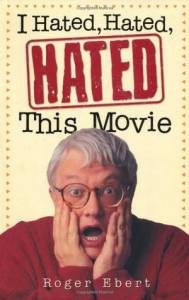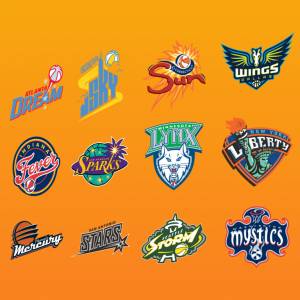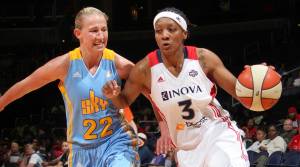In 2000, Roger Ebert wrote a book entitled I Hated, Hated, Hated This Movie, about films he had reviewed and found lacking. They got suitably bad ratings—from zero to 1.5 stars—and an emphatic thumbs-down. Ebert had quite a vocabulary, and he could really put the blast on a lousy movie. He followed up seven years later with a similar tome, Your Movie Sucks. I do not want to be overly negative, nor do I  pretend that I am in Ebert’s echelon; he won a Pulitzer Prize, and I’m still waiting on mine. Nevertheless, the titles of these two books are a fair reflection of how I feel about the Women’s National Basketball Association (WNBA). That is, “I hate, hate, hate this league,” and “Your league sucks.”
pretend that I am in Ebert’s echelon; he won a Pulitzer Prize, and I’m still waiting on mine. Nevertheless, the titles of these two books are a fair reflection of how I feel about the Women’s National Basketball Association (WNBA). That is, “I hate, hate, hate this league,” and “Your league sucks.”
Let me start off with a positive. It is my general impression that the WNBA has the highest quality women’s basketball in the world. There are some strong pro leagues in Europe and Russia, but they are a notch or two below. I have never attended a WNBA game, but I have seen snippets on television and YouTube. I say without qualification, these girls can play. I am a supporter of all forms of athletics for females and am aware that until not so long ago, serious sports was thought to be the sole preserve of men. Most of us know better, and hallelujah for that.
But as you may surmise, there are many things about the WNBA I do not like. Easily the most significant is how it has piggy-backed on the men—the NBA—since its founding in 1996. Women’s basketball leagues had come and gone, but commissioner David Stern must have concluded that for marketing reasons (or maybe he was ensnared by political correctness), the NBA was going to put its significant financial resources behind the distaff league. The WNBA has survived for nearly 20 seasons for this reason alone, which irks me greatly. Every other sports league has had to stand on its own two feet, fighting for survival and profitability. Why not this one? All WNBA teams until rather recently were owned by the NBA or counterpart teams (Detroit Pistons and Detroit Shock, Houston Rockets and Houston Comets, Los Angeles Lakers and Los Angeles Sparks, etc.) and played in their arenas—albeit before much smaller audiences. These days, about 1/3 of the WNBA franchises call themselves independent, having no affiliation with a specific NBA team.
Play basketball during basketball season

The fact that the WNBA does not play during basketball season (roughly November to March) bugs me, too. Call me old-school if you wish, but to be legitimate, you have to play in-season. Here you have the main reason I disfavored the United States Football League which played from 1983 to 1985 in the spring and summer. That ain’t football season, sorry. And basketball season is not June through early October, which the WNBA has followed for nearly two decades.
Since 2009, WNBA uniforms have featured ads. I don’t like this one bit. So what if soccer teams have been doing it for much longer, and (male) race car drivers are most guilty of all? Leagues that are financially strong don’t have to go shilling for insurance agencies, soft-drink companies, mobile phone makers and so on. You do not see the NFL, Major League Baseball or the NBA plastering their unis with commercial advertisements. This is totally gauche.
Attendance at WNBA games is dubious. Are you familiar with the concept of “papering the house”? If you give away enough tickets, you will get a decent number of fannies in the seats. That, of course, is not tenable on a long-term basis. Average attendance is just over 7,000, legitimate or not. It seems that there are always extenuating circumstances for such poor figures. Most televised games are done on a regional basis, and the number of viewers is quite small. Go ahead and compare that with the NBA.
Sports and sex
I was determined to stay away from the homo issue; it is a fact that many of the league’s players and fans are lesbian. As a heterosexual male, this neither bothers nor surprises me. But a couple of years ago, a new initiative called the WNBA Pride Platform was announced. It has involved a series of gay-oriented events both during games and away from the arenas. If a gay pride march takes place in New York or Indianapolis or Long Beach, the WNBA will be there, waving the rainbow flag. The league had long purported to be about basketball and no more, but having taken such a step is a tacit admission of weakness. Tom Van Riper, who writes about the business of sports for Forbes magazine, asked whether this was the beginning of the end for the WNBA.
Despite its steadfast support from the NBA, the WNBA is unstable. It started with 8 teams, expanded to 16 and has since shrunk to 12. Franchises have opened with fanfare and shut down soon thereafter. The Miami Sol and Portland Fire—honestly, I had never heard of these teams before writing the present article—lasted just three seasons.
In line with a decision made by the NCAA in 1984, the WNBA plays with a ball that is smaller and lighter than the regulation-size ball. The ostensible reason is that since women have smaller hands (and let’s state the truth—they are not as strong), they need this to play the game well. Please. Whenever I hear somebody oohing and ahing about how female college and pro players handle the ball and shoot, I remind him or her that the little ball makes a big difference. And since the rim is not made proportionally smaller, the ball is bound to go in more often. Furthermore, the women’s 3-point line is four feet closer to the rim than for the men. Damn, how many advantages do you need?
I had been thinking of doing this piece for at least a year and knew it was time to act when I read the comments of Chicago Sky forward Elena Delle Donne. She opined that the WNBA should lower its rims to nine feet. That would make for a very different game indeed. Delle Donne got a lot of blowback for making such a suggestion, which would create all sorts of problems for players long accustomed to the 10-foot rims. It would also be tacit admission that the women’s game is not as good, not as exciting, not as anything as that of the men.
The piggybacking will continue
For almost 20 years, we have heard the media boosting the WNBA and trying to give it an aura of authenticity. I think this would be fine, I really do, if the league were self-sufficient. But it is not, and I have strong doubts that it ever will be. In my view, it is time for the NBA to cut the apron strings. The league should stand or fall on its own merits. As stated before, everybody else has to so why not the WNBA? Unfortunately, Stern’s successor, Adam Silver, has indicated that the boys plan to keep shoveling money to the girls.

4 Comments
This is so funny thanks i love it
I’m with Mr. Pennington: there’s pretty much nothing to like about the WNBA. I wouldn’t cross the street if there were an NBA tussle so why would I watch this stuff? Only the ultra-liberal, bigoted ESPN keeps these leagues making money and I’m no fan of the Eastern Seaboard Prejudiced Network. Well done, King Richard.
I agree, Darrell. You say it so well!
WNBA is following in the steps of the joke known as the NBA. In front of half-empty arenas, Chicago Sky won the championship this past season. Worse, the city of Chicago (think Lori “Groot” Lightfoot) manufactured a pep rally that was a media event only and few attended. When the Blackhawks won three Stanleys in six years, crowds mobbed the parade route from the United Center to the lakefront: over three miles! Lesbianism is rife in the league (I couldn’t care less) and I’m betting that dovetails to the Far-Left agenda.
Add Comment